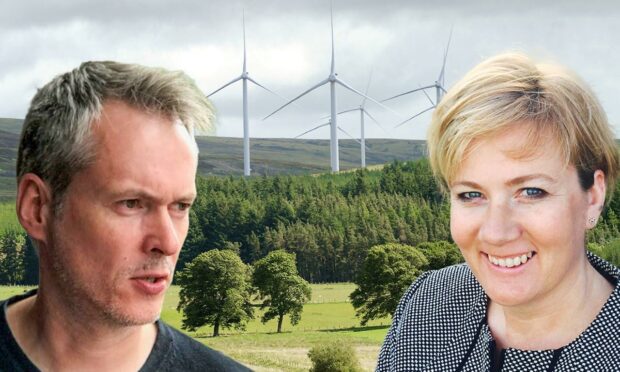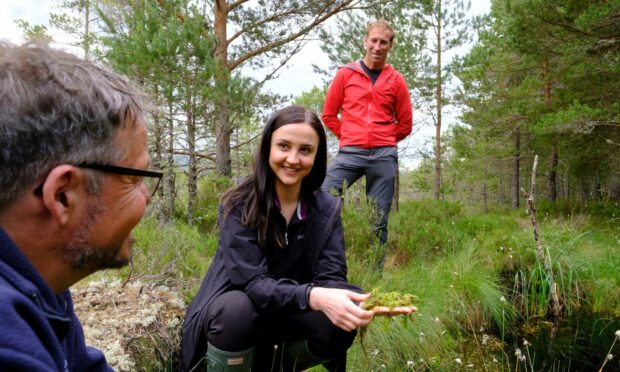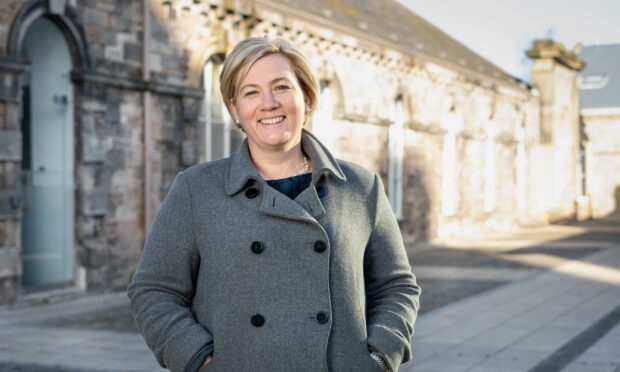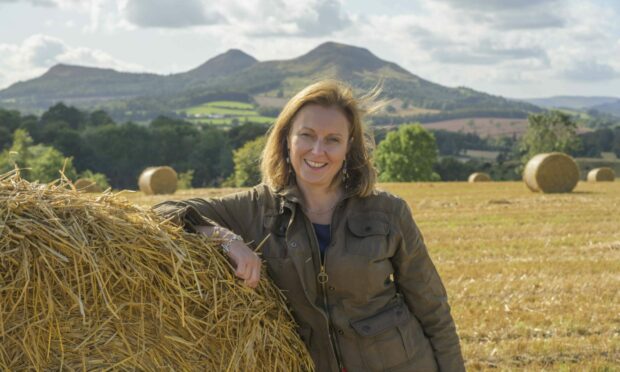Campaigners hope Scotland is on the brink of a “pivotal” moment that will put land reform at the heart of the nation’s response to the climate crisis.
As the eyes of the world fall on Glasgow ahead of the COP26 climate summit next week, Nicola Sturgeon and all Holyrood politicians are being challenged to keep promises during what has been billed as a “really significant” period for land reform over the next two years.
They are being told to respond to the “risks” presented by the rise of so-called “green lairds” moving into Scotland’s land market.
Campaigners want to empower local communities in the drive towards “net zero” carbon emissions. And they want it to spearhead the post-pandemic economic recovery.
However, concerns have also been raised that “radical” land proposals by the SNP-Green government could pose a “real threat to vital jobs and livelihoods in rural areas”.
Battlelines drawn
The battlelines were drawn as the Holyrood government prepares to launch a consultation next year on a new Land Reform Bill, ahead of its expected introduction by the end of 2023.
It could include a controversial “public interest test” on large-scale land sales, which may ultimately lead to deals being blocked or becoming subject to strict conditions.
Meanwhile, there are further legislative plans that could have implications for the land reform agenda.
The include a new Human Rights Bill, a Community Wealth Building Bill, a strengthening of the Land Rights and Responsibilities Statement, and other work by the Scottish Land Commission to address concerns about ‘green lairds’.
Calum MacLeod, policy director for Community Land Scotland, said: “I think we are in a really significant moment, where government and parliament need to see land reform, defined as changes to land ownership and land use in the public interest, as a way of helping to address the big structural challenges of the climate emergency and post-pandemic recovery that we face as a society and as a nation.”
Significant moment
He believes the transition to net zero would lead to “big changes” in the way land is used in Scotland over the coming years, and ownership would have a “critical impact” on what was done and who would benefit in society.
“There are obvious risks to achieving a ‘just transition’ as a result of the emergence of a new generation of ‘green lairds’ of various types who are keen to capitalise on the financial and other benefits associated with carbon sequestration in Scotland’s largely unregulated land market,” Mr MacLeod said.
The next couple of years will be pivotal in all of this.
“Those risks are magnified by Scotland’s unusually concentrated pattern of rural private land ownership where the vast majority of the land is in the hands of very few people.”
On the wider potential contribution of land reform, he added: “The next couple of years will be pivotal in all of this.
“The challenge for government and parliament is to make sure it connects land reform to these wider climate emergency and post-pandemic recovery agendas in ways that make a real difference to people in their everyday lives.”
‘Opportunity and an urgent necessity’
Community Land Scotland, which represents land owners who manage 560,000 acres, recently wrote to the First Minister asking her to consider establishing a new community wealth fund, backed by at least £100million.
It said the cash could be used to deliver a “paradigm shift” in the contribution of communities, by “scaling up” successful sustainable projects, such was renewable energy schemes, with profits reinvested in other local projects.
What is the public interest test?
In September, the programme for government was unveiled by the new SNP-Green administration at Holyrood.
It included a commitment to “develop and take forward a new Land Reform Bill, with measures to address the concentration of land ownership in Scotland, including a public interest test”.
Answering recent parliamentary questions, Land Reform Minister Mairi McAllan said she has an unwavering commitment to land reform and to tackling the issues associated with the scale and concentration of land ownership.
On the public interest test, she said it could stimulate “a more productive, diverse and dynamic pattern of land use”.
She added: “The test will aim to ensure that the public interest is considered on transfers of particularly large scale land holdings, and we will aim to introduce a pre-emption in favour of community buy-out where the public interest test applies, and where it is appropriate to do so.
“We intend that the public interest test will help address the issues associated with concentrated land ownership.”
A public interest test could potentially make a significant contribution to our longstanding land reform objectives by stimulating a more productive, diverse and dynamic pattern of land use.”
In a recent Holyrood debate, the minister also signalled the Scottish Government is ready to seize upon an “immediate window of opportunity” to ensure communities benefit from a boom in land values created by so-called “green lairds”.
The term has been used to describe businesses seeking to offset their carbon emissions and take advantage of government grants by buying land for initiatives such as tree planting, as well as investors focused on generating returns through trading in carbon credits.
Mercedes Villalba, a north-east MSP and Labour environment spokeswoman, said the government’s proposals should be accelerated.
“The Scottish Government’s commitment to introduce a public interest test for land transfers is a welcome step forward. But the government simply isn’t moving fast enough on this,” she said.
“Serious land reform, to break up the large land monopolies in Scotland, is urgently needed to tackle the climate and ecological crises we are facing.”
Sarah-Jane Laing, chief executive of Scottish Land and Estates, appeared sceptical about the need for further legislation, suggesting some of the proposals may be unnecessary and potentially counter-productive.
It is unclear what those continuing to call for diversity of ownership are looking for beyond diversity itself, surely our focus should be making the best use of land.”
“Land businesses have been implementing land reform for generations and in particular in the last 20 years, constantly improving and making the best possible use of land,” she said.
“Many properties and pieces of land are sold or transferred to communities and groups every year, and we continue to support willing sellers across Scotland as well as those working jointly with community groups through leases and joint ventures.
“It is unclear what those continuing to call for diversity of ownership are looking for beyond diversity itself, surely our focus should be making the best use of land.”
She said there is “no evidence” which links scale or concentration of landownership to negative outcomes.
She added: “The proposal for a new Land Reform Bill adds to the plethora of land law and policy, including a land reform act and a community empowerment act within the last six years.
“There is already extensive provision which means that community groups have the opportunity to purchase land where they wish to do so and that, in general, seems to be working.”
Scottish Conservative rural affairs spokeswoman Rachael Hamilton also expressed fears about the impact of the government’s plans.
“There is understandable concern among rural communities about potential radical land reform occurring now the Greens are in government,” she said.
“If SNP ministers bow to their proposals, then there could be a real threat to vital jobs and livelihoods in rural areas.
“It is crucial that there is transparency surrounding land ownership in Scotland, but the SNP-Green coalition must listen to the concerns of rural communities and consult fully on this bill.”





